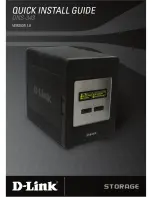
match mpls experimental topmost
To identify specific three-bit experimental (EXP) field values in the topmost Multiprotocol Label Switching
(MPLS) label as match criteria for a class map, use the
match mpls experimental topmost
command in
class map configuration mode. To remove experimental field values from the class map match criteria, use
the
no
form of the command.
match
[
not
]
mpls experimental topmost exp-value
[
exp-value1
...
exp-value7
]
no match
[
not
]
mpls experimental topmost exp-value
[
exp-value1
...
exp-value7
]
Syntax Description
not
not
Experimental value that specifies the exact value from 0 to 7. Up to eight experimental values
can be specified to match MPLS headers.
exp-value
Command Default
No default behavior or values
Command Modes
Class map configuration
Command History
Modification
Release
This command was introduced.
Release 6.0
Usage Guidelines
The
match mpls experimental topmost
command is supported only in the ingress direction. The minimum
value is 0 and maximum value is 7. The maximum allowed entries: 8.
The
match mpls experimental topmost
command is used by the class map to identify MPLS experimental
values matching on a packet.
To use the
match mpls experimental topmost
command, you must first enter the
class-map
command to
specify the name of the class whose match criteria you want to establish. If you specify more than one
match
mpls experimental topmost
command in a class map, the new values are added to the existing match statement.
This command examines the three experimental bits contained in the topmost label of an MPLS packet. Up
to eight experimental values can be matched in one match statement. For example, match mpls experimental
topmost 2 4 5 7 returns matches for experimental values of 2, 4, 5, and 7. Only one of the four values is needed
to yield a match (OR operation).
The experimental values are used as a matching criterion only. The value has no mathematical significance.
For instance, the experimental value 2 is not greater than 1. The value indicates that a packet marked with the
experimental value of 2 should be treated differently than a packet marked with the EXP value of 1. The
treatment of these different packets is defined by the user through the setting of QoS policies in policy map
class configuration mode.
Task ID
Operations
Task
ID
read,
write
qos
Modular QoS Command Reference for Cisco NCS 5500 Series and Cisco NCS 540 Series Routers
19
QoS Classification Commands
match mpls experimental topmost
















































